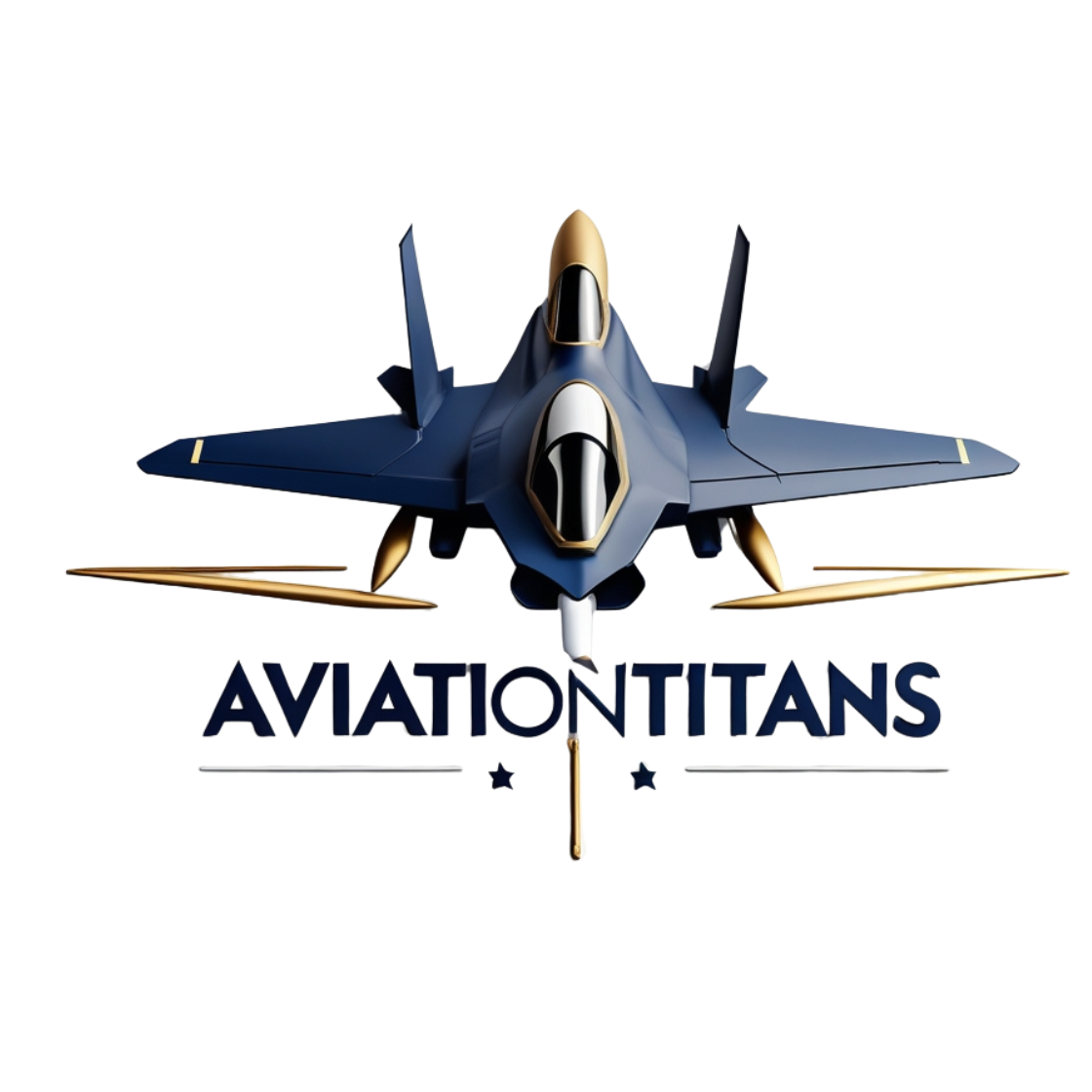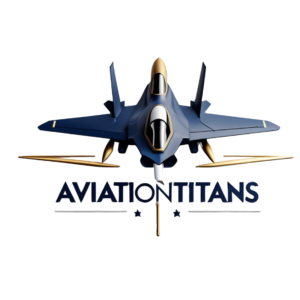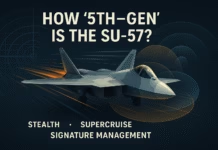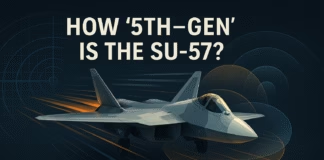TL;DR
The F-35’s avionics fuse a multi-sensor suite—AESA radar, electro-optical targeting and 360° infrared coverage, a powerful AN/ASQ-239 electronic warfare system, and an integrated CNI data-link stack—into a single, pilot-friendly picture via the Panoramic Cockpit Display and Gen III helmet. Ongoing Tech Refresh 3 (TR-3) hardware and Block 4 software add even more processing, new weapons, and a next-gen AN/APG-85 radar to keep pace with threats. Lockheed Martin+2GAO Files+2
What “integrated avionics” means on a 5th-gen jet
Unlike legacy fighters that bolt on separate boxes, the F-35 was designed around an integrated mission system. At the heart of that system are five baseline elements:
- AN/APG-81 AESA radar
- AN/ASQ-239 EW/countermeasures suite
- AN/AAQ-40 EOTS (Electro-Optical Targeting System)
- AN/AAQ-37 DAS/EODAS (Distributed Aperture System)
- AN/ASQ-242 CNI (Communications, Navigation & Identification)
These sensors and radios are fused in software so the pilot sees one coherent picture, not five separate stovepipes. Lockheed Martin
Radar: APG-81 today, APG-85 tomorrow
The AN/APG-81 AESA radar gives the F-35 long-range air-to-air detection, synthetic aperture mapping, and advanced air-to-ground modes, tightly coupled to EW and EOTS for automatic target correlation. The Block 4 roadmap brings AN/APG-85, a multi-function successor designed to defeat modern threats and compatible with all F-35 variants—backstopped by the extra compute and memory in TR-3. f35.com+1
Eyes in every direction: EOTS + EODAS
- AN/AAQ-40 EOTS is an internal, low-observable IR/laser targeting system that replaces the draggy pod of 4th-gen jets. It supports long-range IR search, laser designation, and bomb guidance without breaking the jet’s stealth lines. A Block 4 Advanced EOTS option increases range and clarity. Lockheed Martin+1
- EODAS (formerly DAS) uses six IR sensors embedded around the airframe to deliver true 360° coverage: missile warning, passive air-to-air cueing/track, and pilot night imagery projected in the helmet—no pilot “slew” required. Recent production lots adopt Raytheon’s refreshed EODAS for better performance and sustainment. RTX
Why it matters: With radar emissions minimized, the jet can passively build tracks and cue weapons, then flip to radar at the last moment—or never at all.
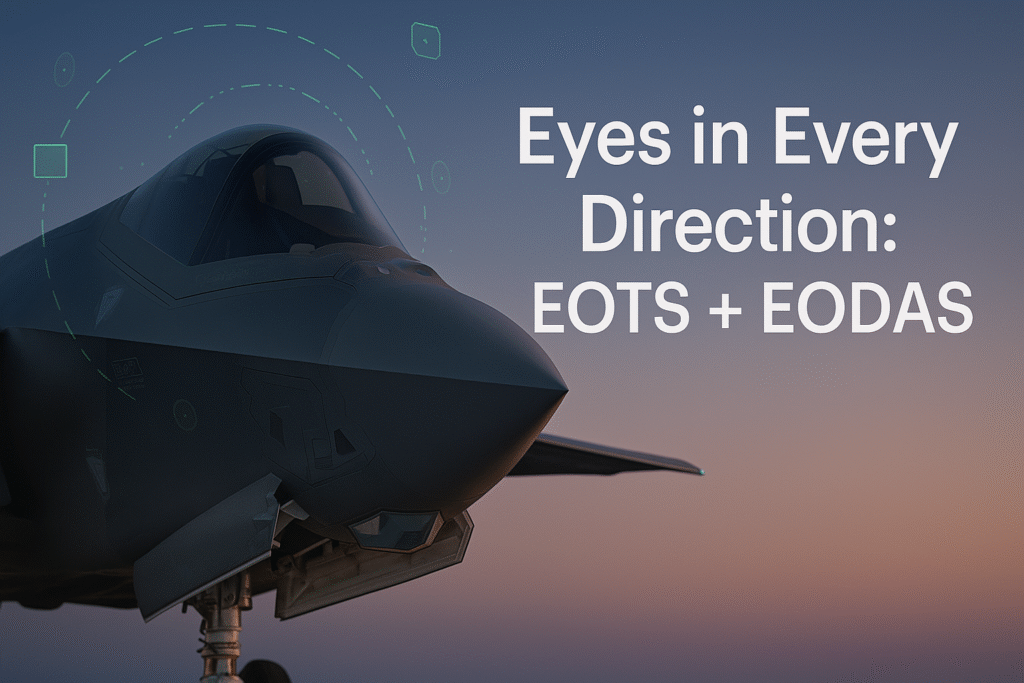
Electronic warfare: AN/ASQ-239 as the invisible bodyguard
BAE Systems’ AN/ASQ-239 provides 360° threat warning, geolocation, and electronic attack options, feeding and receiving data from radar and DAS in real time. It also manages self-protection measures including the AN/ALE-70 fiber-optic towed decoy, which lures inbound radar-guided missiles away from the aircraft. Block 4 upgrades expand bandwidth and techniques while cutting ownership cost. BAE Systems+2Military Aerospace+2
Data links & navigation: the CNI “internet”
Northrop Grumman’s AN/ASQ-242 CNI suite bundles dozens of functions—UHF/VHF voice and data, IFF Mode 5, TACAN, SATCOM, GPS/INS, Link-16, and the stealth-friendly Multifunction Advanced Data Link (MADL). MADL is a directional, high-rate link for low-observable formations to share tracks and targeting data without lighting up the battlespace. As Block 4 capabilities grow, the CNI’s software-defined architecture keeps pace. cdn.northropgrumman.com+1
Cockpit: where fusion meets the pilot
- Panoramic Cockpit Display (PCD): an 8×20-inch touch display that blends flight status, fused tracks, EW cues, and weapons. Pilots can split/merge windows and pinch-zoom maps just like a modern tablet. Military Aerospace
- Gen III HMDS (Helmet-Mounted Display System): replaces a physical HUD with symbology on the visor and visor-projected night vision, plus real-time EODAS imagery so pilots can “see through” the airframe. It’s the pilot’s primary display, not just an overlay. RTX
The result is cognitive offload: instead of managing sensors, pilots manage effects.
Sensor fusion: the F-35’s “secret sauce”
The F-35 doesn’t just present raw sensor returns. It correlates and fuses data into a single track file with confidence levels, automatically de-duplicate contacts, and classify emitters. That fused picture is then shared over MADL/Link-16 to create a common air picture with other assets. This is the core design philosophy behind F-35 “Information Fusion.” swiss-f35.ch
TR-3 & Block 4: new computing, more capability
To keep up with higher-resolution sensors, bigger databases, and more complex EW techniques, the jet is receiving Technology Refresh 3 (TR-3)—new processors, memory, and displays—followed by Block 4 software content and hardware inserts (including APG-85, Advanced EOTS, and EW growth). Government auditors note TR-3 delays and a longer Block 4 timeline; those upgrades are still critical to unlocking next-gen weapons and advanced sensor modes at scale. GAO Files
Survivability in contested airspace
The F-35’s avionics underwrite a layered survival strategy:
- Emissions control & passive tracking via EODAS/EOTS to stay hidden.
- Directional data links (MADL) to share tracks covertly.
- EW maneuvers with ASQ-239 for threat detection, geolocation, and jamming.
- Hard-kill options cued by fused tracks.
- ALE-70 towed decoy as a last-ditch shield against radar-guided missiles. BAE Systems+1
Mission data files: customizing the jet’s “threat brain”
Electronic warfare depends on mission data files—libraries that tell the jet which emitters to look for and how to respond. A network of national and allied reprogramming labs (e.g., Eglin AFB) builds and validates those files so each fleet flies with the latest threat intel. This “software brain” is as important as any hardware upgrade. f35.com
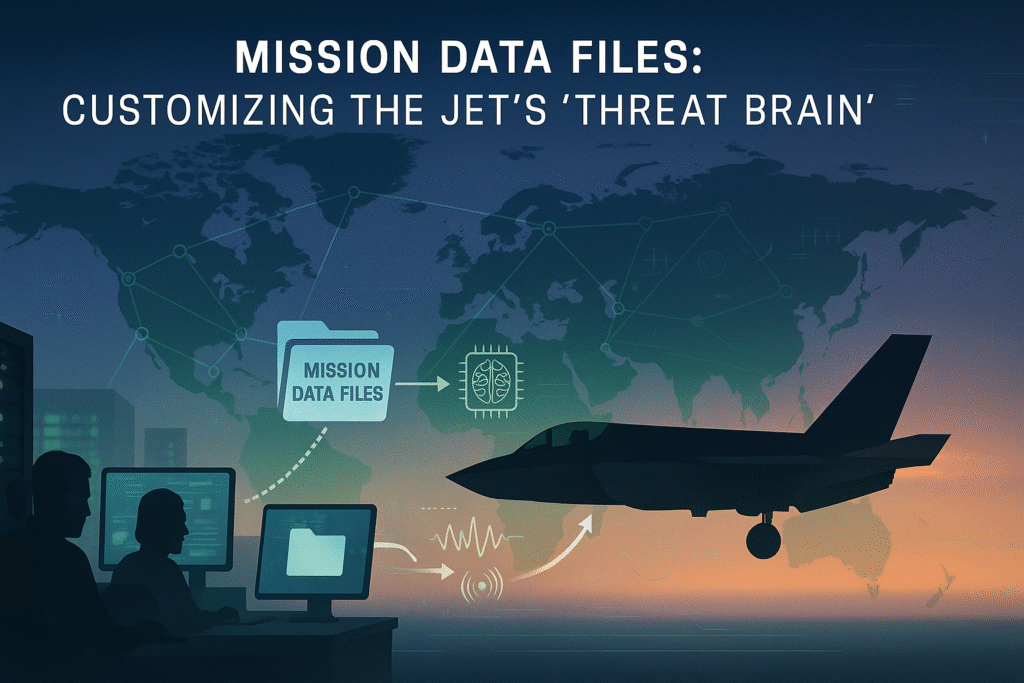
What’s actually on the pilot’s glass?
On a typical intercept or strike sortie, the pilot might see:
- Fused track symbols with ID/confidence and EW threat rings
- Radar map tiled beside a moving map, with EOTS video inset
- Helmet-cueing of off-boresight tracks from EODAS
- Weapons solution cues and emissions control alerts
- Network status for MADL/Link-16 participants
The key is consistency: whether a target is found by radar, EOTS, DAS, or offboard, the symbol behaves the same. That consistency speeds decisions.
Block 4 highlights to watch
- APG-85 multifunction radar (GaN, advanced modes) across A/B/C variants
- Advanced EOTS with better ranges/resolution
- ASQ-239 growth (bandwidth, techniques, cost-per-flight-hour reductions)
- CNI enhancements for resilient, jam-tolerant networking
- Weapons integration (U.S. and partner-unique) aligned with fusion upgrades
All of this leans heavily on TR-3 compute, which underpins the software roadmap into the early 2030s. GAO Files+3Northrop Grumman News+3Lockheed Martin+3
Frequently Asked Questions (FAQ)
Is the F-35’s radar always on?
No. Tactics often prioritize passive ops using EODAS/EOTS to reduce emissions. When radar is used, its AESA nature supports low-probability-of-intercept techniques, and fusion still cross-checks other sensors to avoid over-reliance on a single emitter. Lockheed Martin
What’s special about MADL compared to Link-16?
MADL is directional and LPI/LPD-minded, optimized for stealth formations to share rich track data without giving up their position. Link-16 remains essential for broader joint connectivity. The CNI suite runs both. investor.northropgrumman.com
How is the helmet different from a normal HUD?
The Gen III HMDS replaces a fixed HUD by projecting flight/tactical symbology and night-vision imagery on the visor, and it can display real-time EODAS video so pilots can “look through” the jet. It’s the primary display, not a backup. RTX
Why are TR-3 and Block 4 taking time?
They’re large, interdependent upgrades. The GAO has documented schedule pressure tied to integrating new hardware/software at fleet scale, but the payoff is significant headroom for sensors, EW, and weapons. GAO Files
Will older jets get the new avionics?
Yes—most upgrades field via retrofit and software drops. TR-3/Block 4 content is being sequenced across lots and depots so earlier aircraft can catch up over time. GAO Files
Key specs & components (at a glance)
- Radar: AN/APG-81 AESA; AN/APG-85 for Block 4 lots
- EO/IR: AN/AAQ-40 EOTS (Block 4: Advanced EOTS); EODAS 360° IR
- EW: AN/ASQ-239 with AN/ALE-70 towed decoy
- CNI: AN/ASQ-242 with MADL + Link-16, IFF Mode 5, SATCOM, GPS/INS
- Pilot-vehicle interface: 8×20-inch PCD + Gen III HMDS
- Compute roadmap: TR-3 hardware → Block 4 software/features
GAO Files+8Lockheed Martin+8Northrop Grumman News+8
F-35 avionics are less about any one sensor and more about fusion at scale—collect, correlate, classify, and share, all while staying hard to detect. With TR-3 bringing fresh computing headroom and Block 4 layering in APG-85, Advanced EOTS, and EW growth, the Lightning II’s sensor-shooter logic remains on a steep upward curve for the 2030s fight. Northrop Grumman News+1
